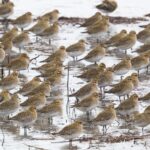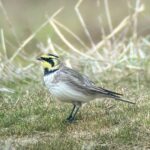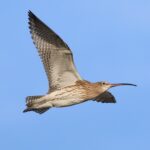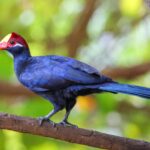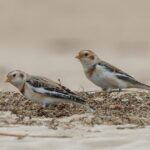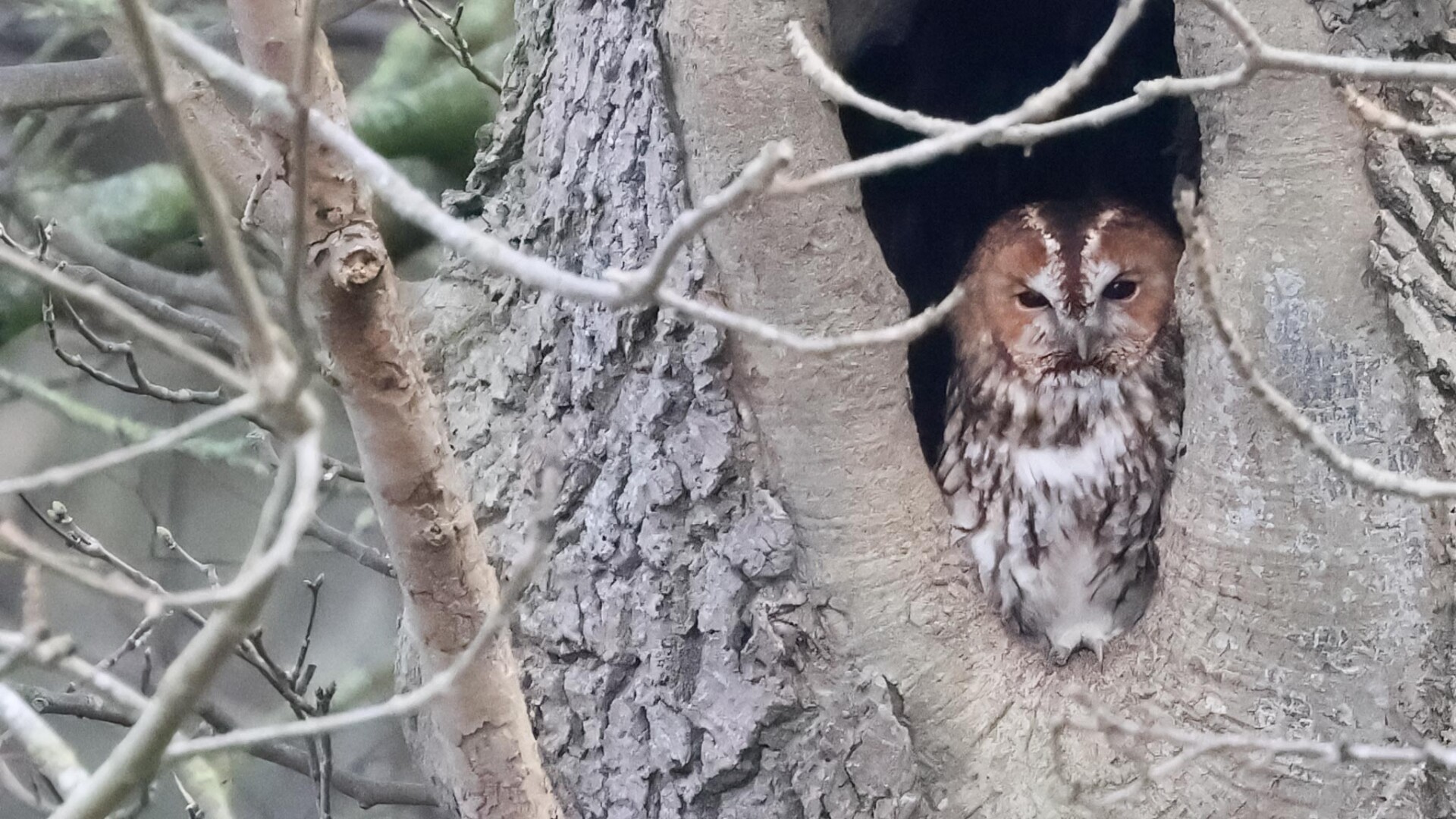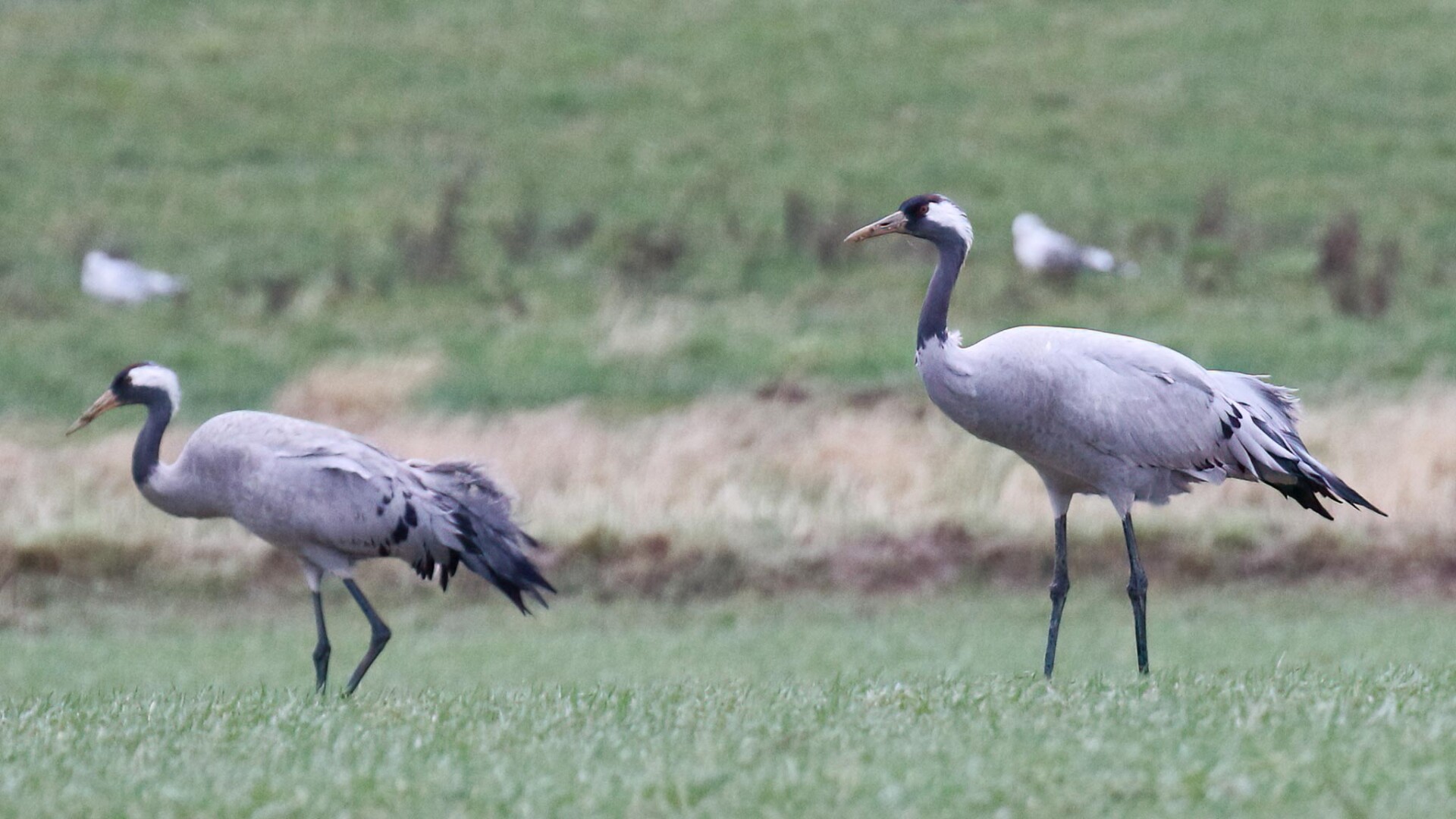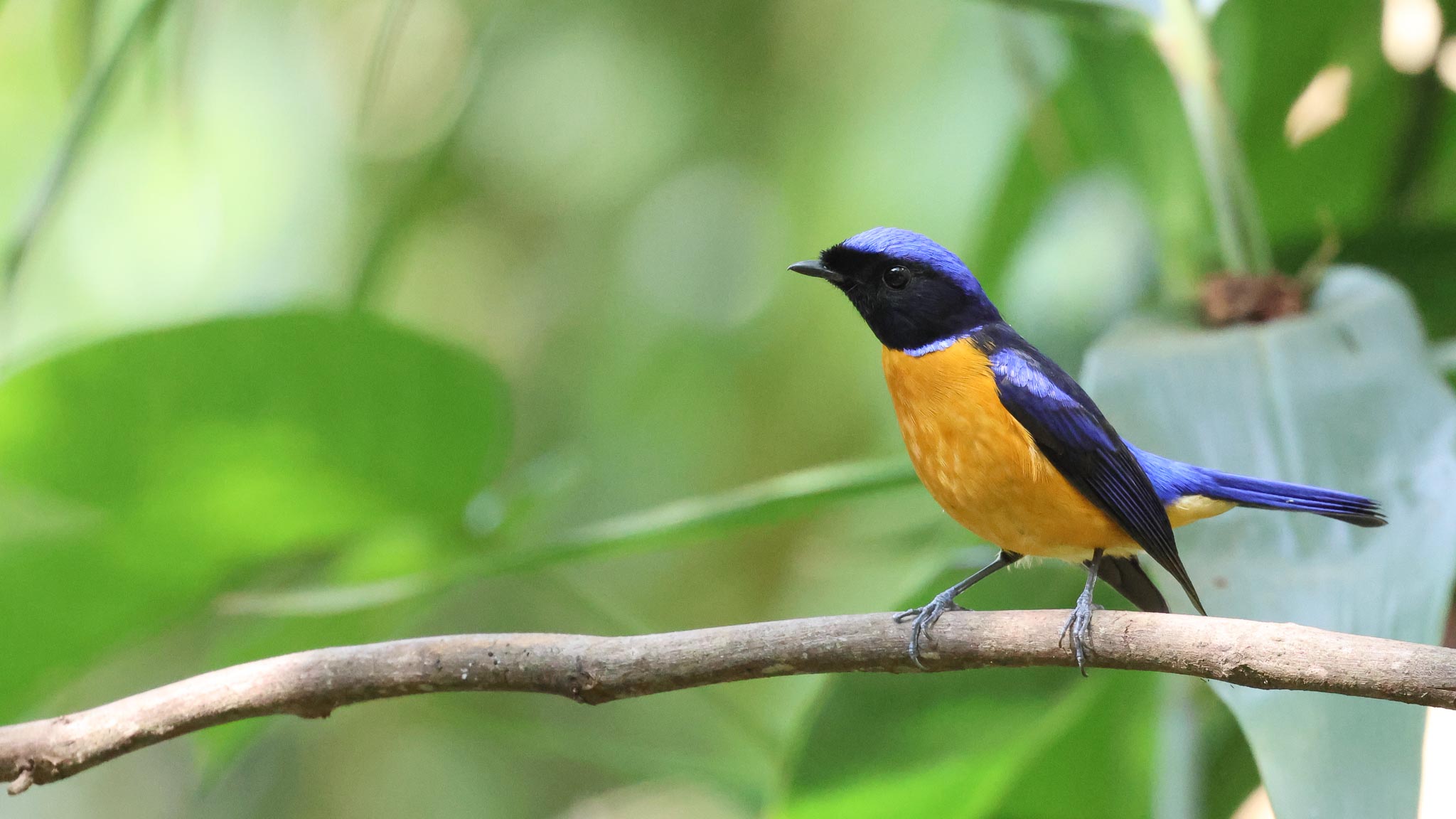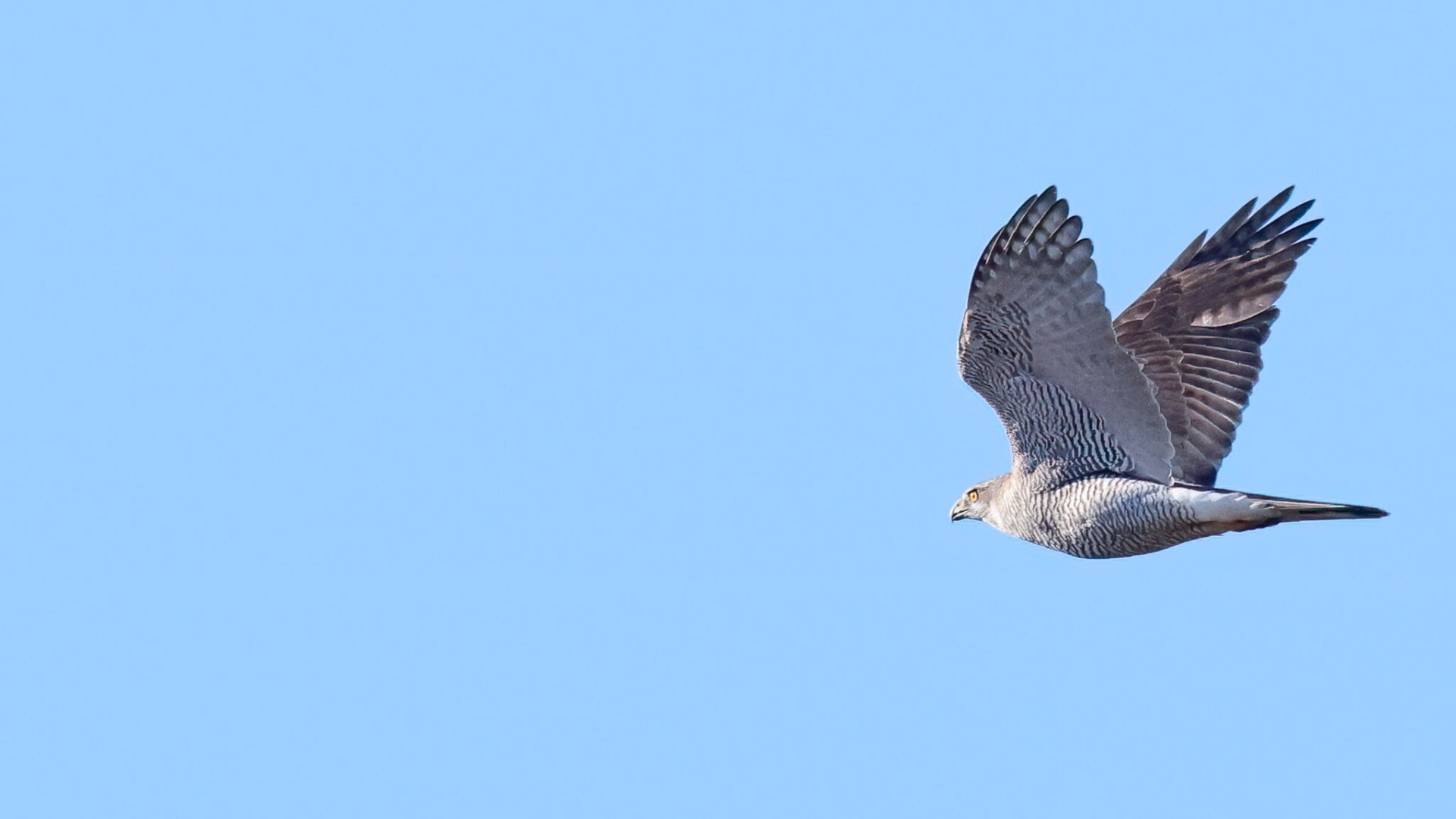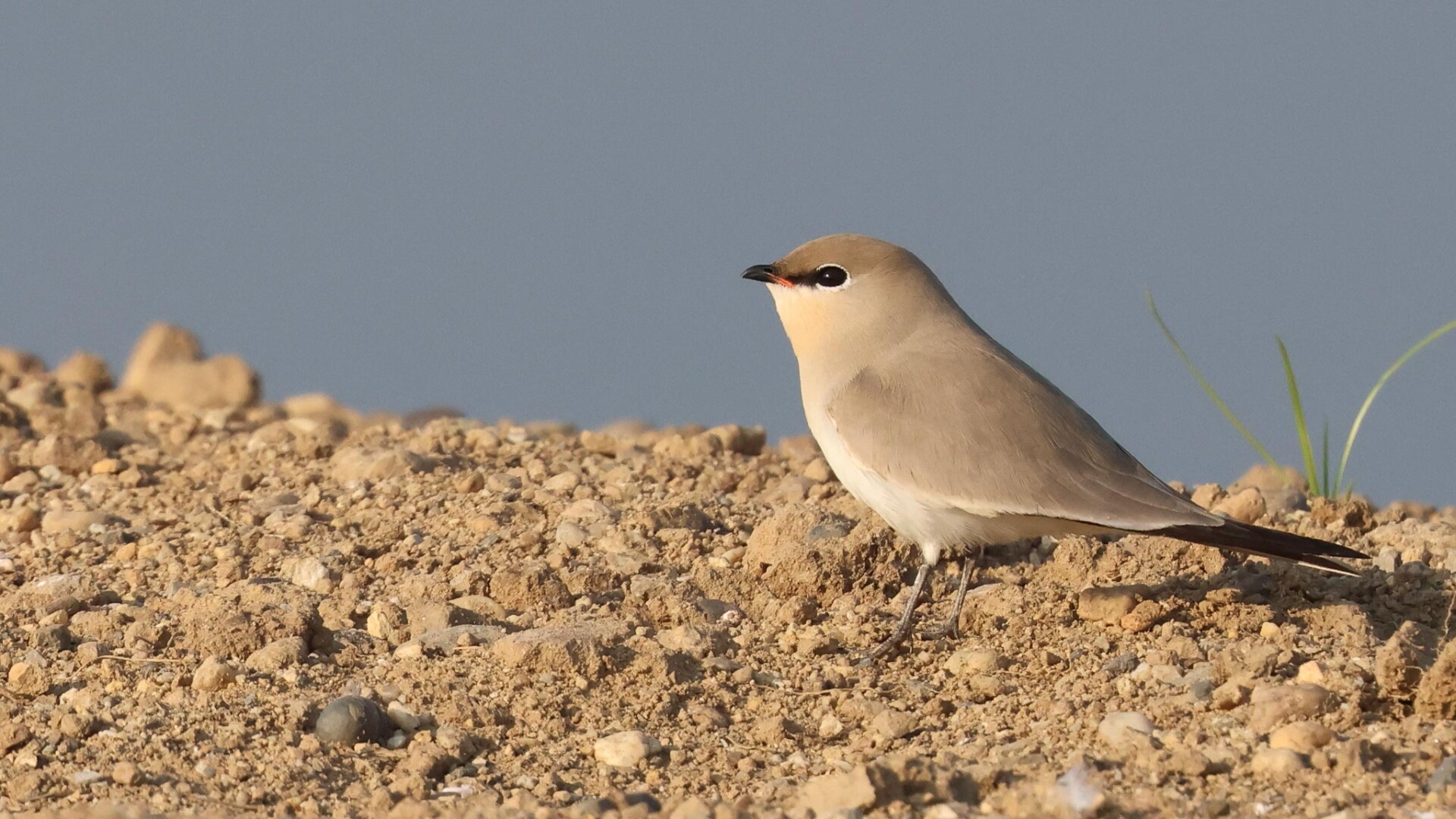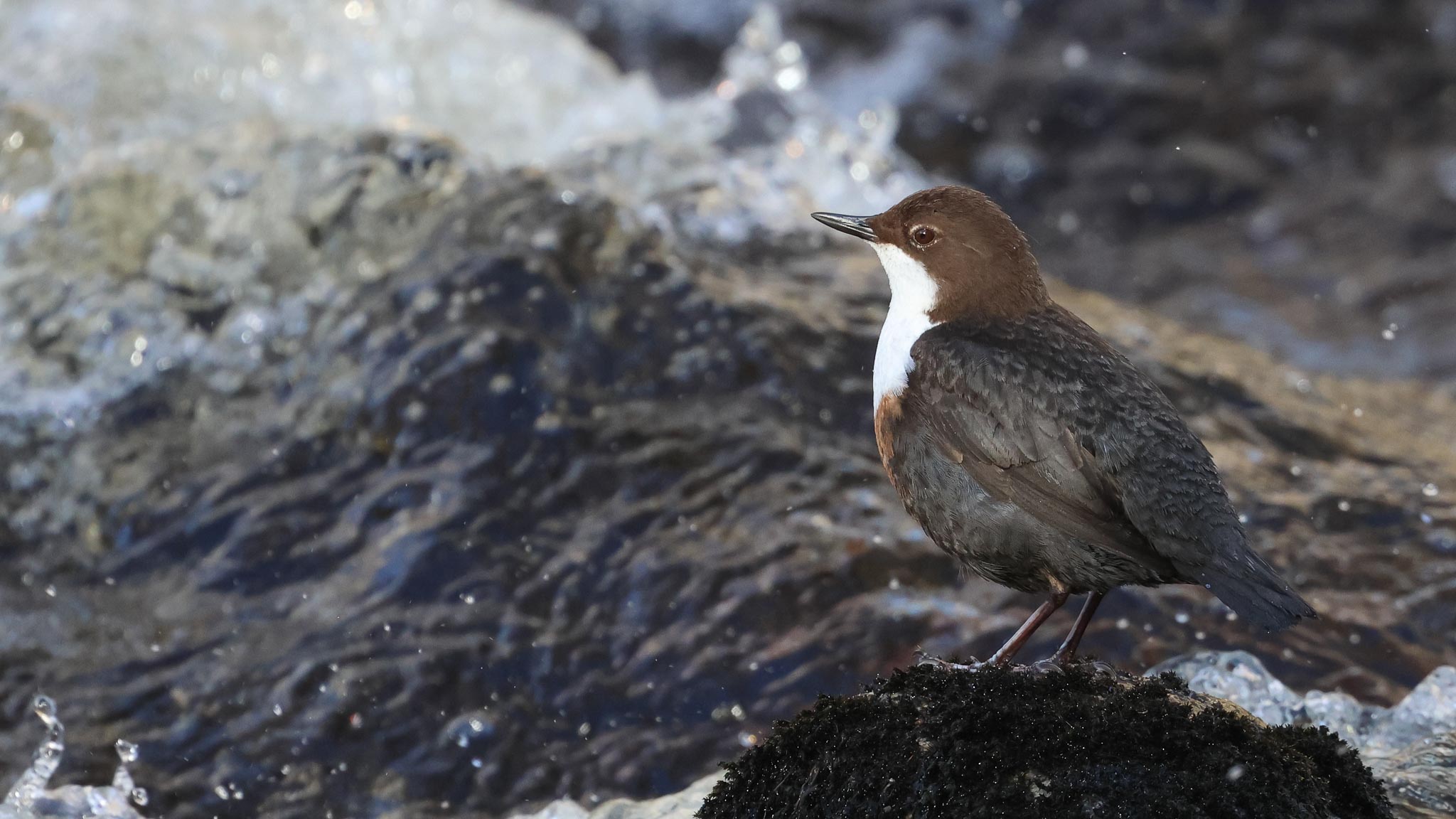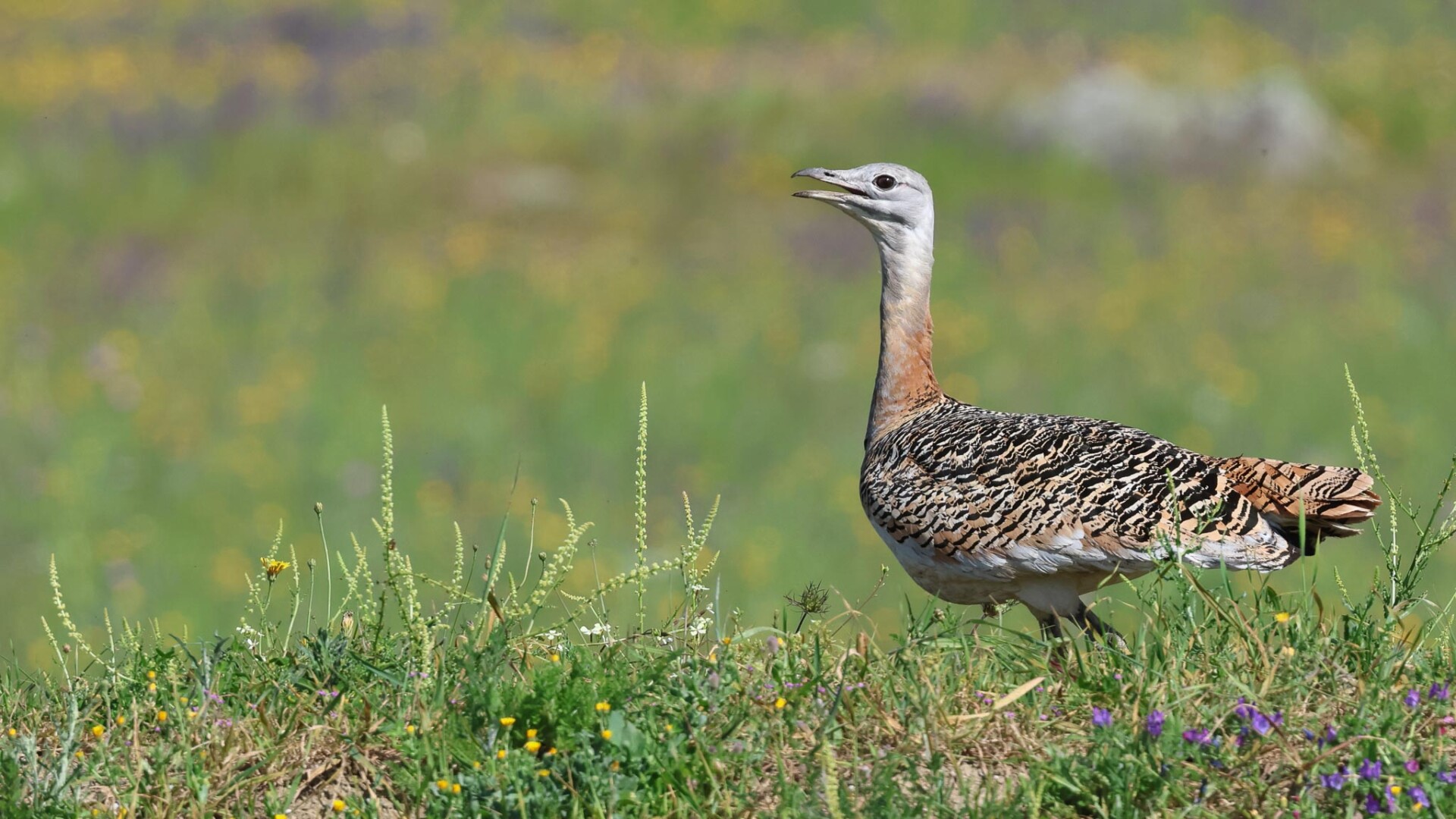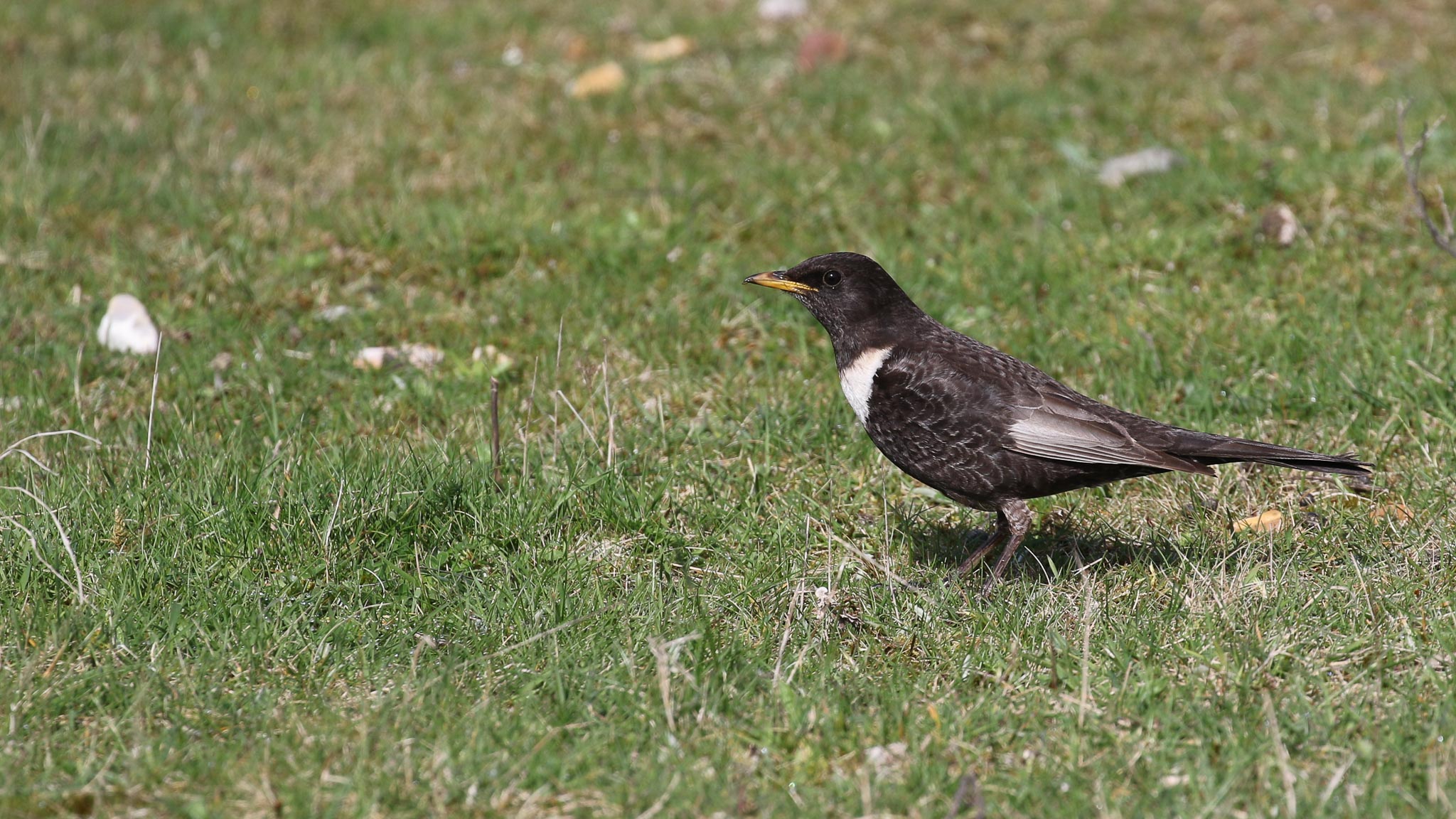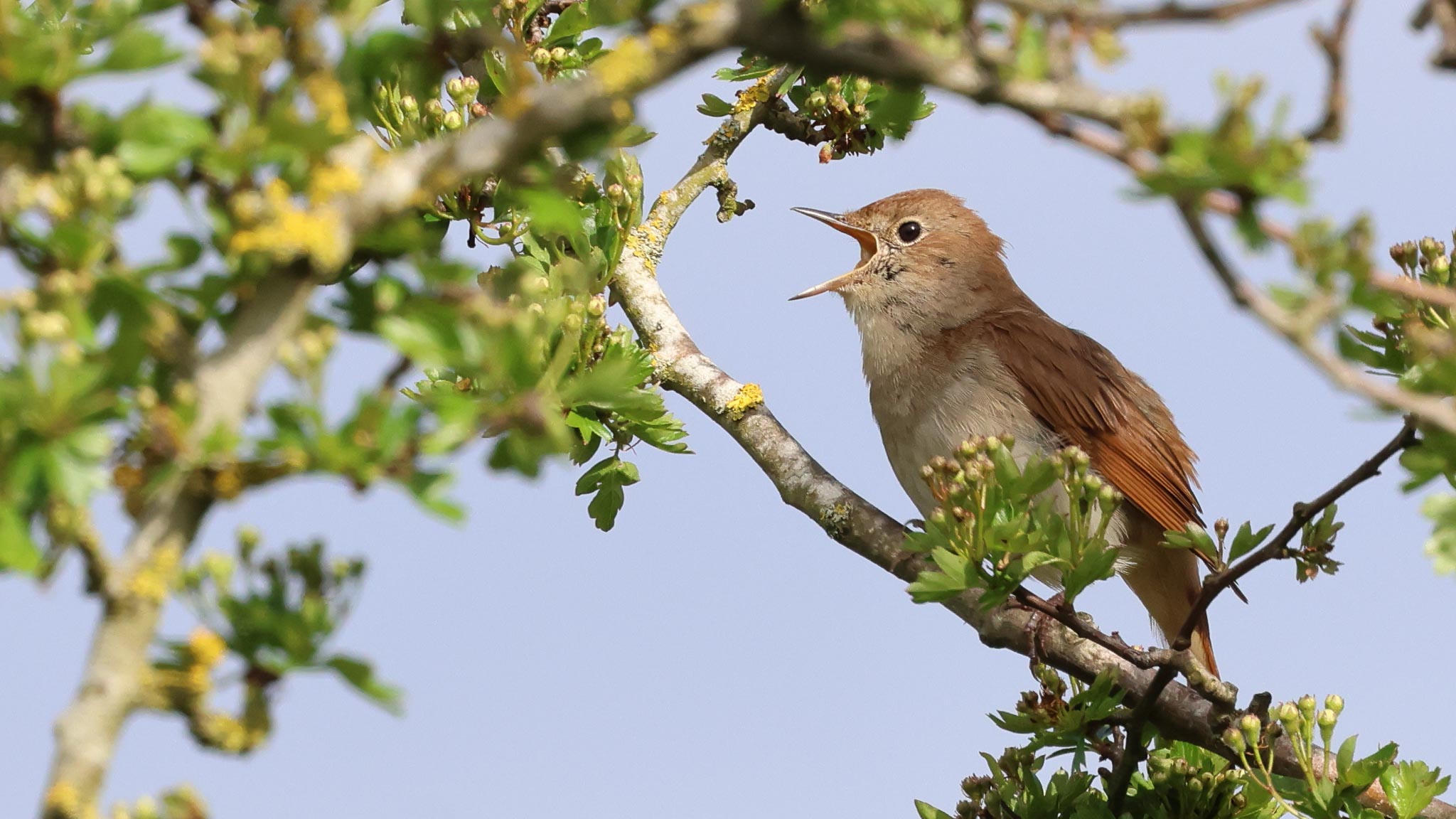Day 1 of a four day Autumn Migration Tour today. It was a bright and at times sunny day, but with a very blustery SW wind which had been forecast to drop but didn’t.
Our destination for the morning was Holkham. When we got to Lady Anne’s Drive the wind was quite a bit keener than we had been expecting. Scanning the grazing marshes either side, a good selection of raptors was out, mostly enjoying the breeze. A Red Kite drifted over, two or three Marsh Harriers quartered out over the grass, a couple of Sparrowhawks shot overhead, a Kestrel hovered out over the grazing marsh. Two Common Buzzards were perched close to each other in a distant hawthorn bush.
Two Grey Partridges were tucked down in the grass, and we could just about see the top of them through the scopes. A Grey Heron was motionless on the edge of the ditch the other side. A small gaggle of Greylags were out on the grass, along with several Egyptian Geese, and scanning through we found a lone Pink-footed Goose with them too, which we got in the scope for a closer look. A larger flock of Pink-footed Geese flew across over the pines – we could hear their yelping calls, the sound of the winter here in Norfolk.
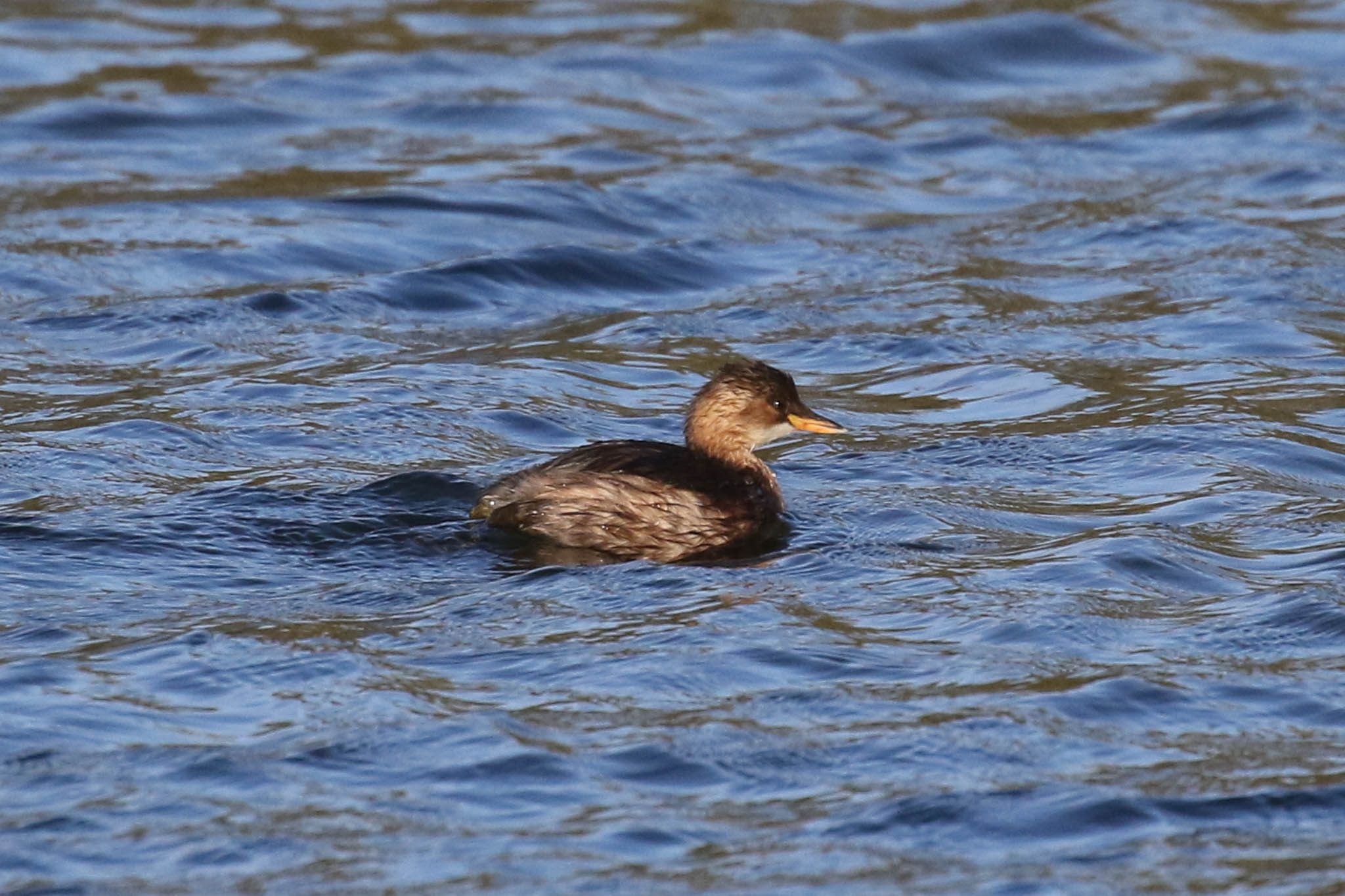
The walk west along the track through the trees was quiet – presumably the tit flocks were hiding in the pines today, where it was more sheltered. Salts Hole held lots of Gadwall, including several smart drakes already emerging from eclipse, and we counted at least six Little Grebes too. Periodically a Jay flew across between the trees and three more Marsh Harriers circled up in the distance, at one point chased round by a Red Kite. We stopped again to scan from the gate before Washington Hide, but there was no sign of anything new here. A Cetti’s Warbler shouted from somewhere deep in the reeds.
When we got to the boardwalk, we could see tits at the far end, flitting in and out of the pines. We walked down for a closer look and found a large mixed flock – Long-tailed Tits, Coal Tits, Blue Tits, several Goldcrests and at least two Treecreepers. They disappeared away along the front edge of the pines, but quickly changed their minds and came back past us, disappearing off in the other direction. We couldn’t see anything obviously different with them, but they didn’t hang around long.
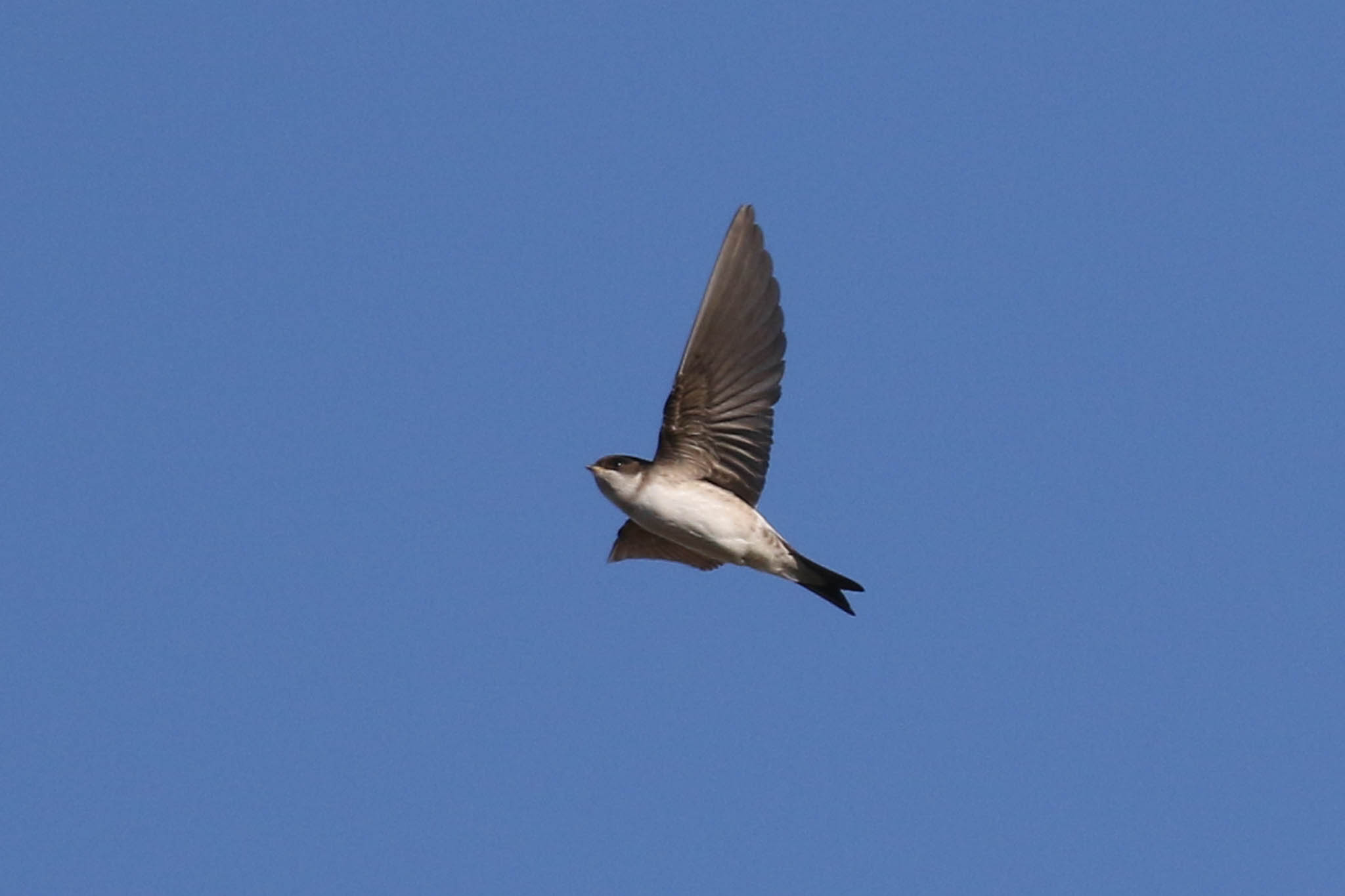
Looking out from the north side of the pines, there were lots of House Martins hawking out over the dunes. Some were in the lee of the pines, but more were right out over the beach, landing on the sand. Presumably they were finding food on the ground. There has been a big passage of House Martins along the coast in the last few days, as they leave us and head down to Africa for the winter.
It was much more sheltered this side and several Common Darter dragonflies and a couple of Wall butterflies were basking in the sunshine in the dunes. A Migrant Hawker flew past too.
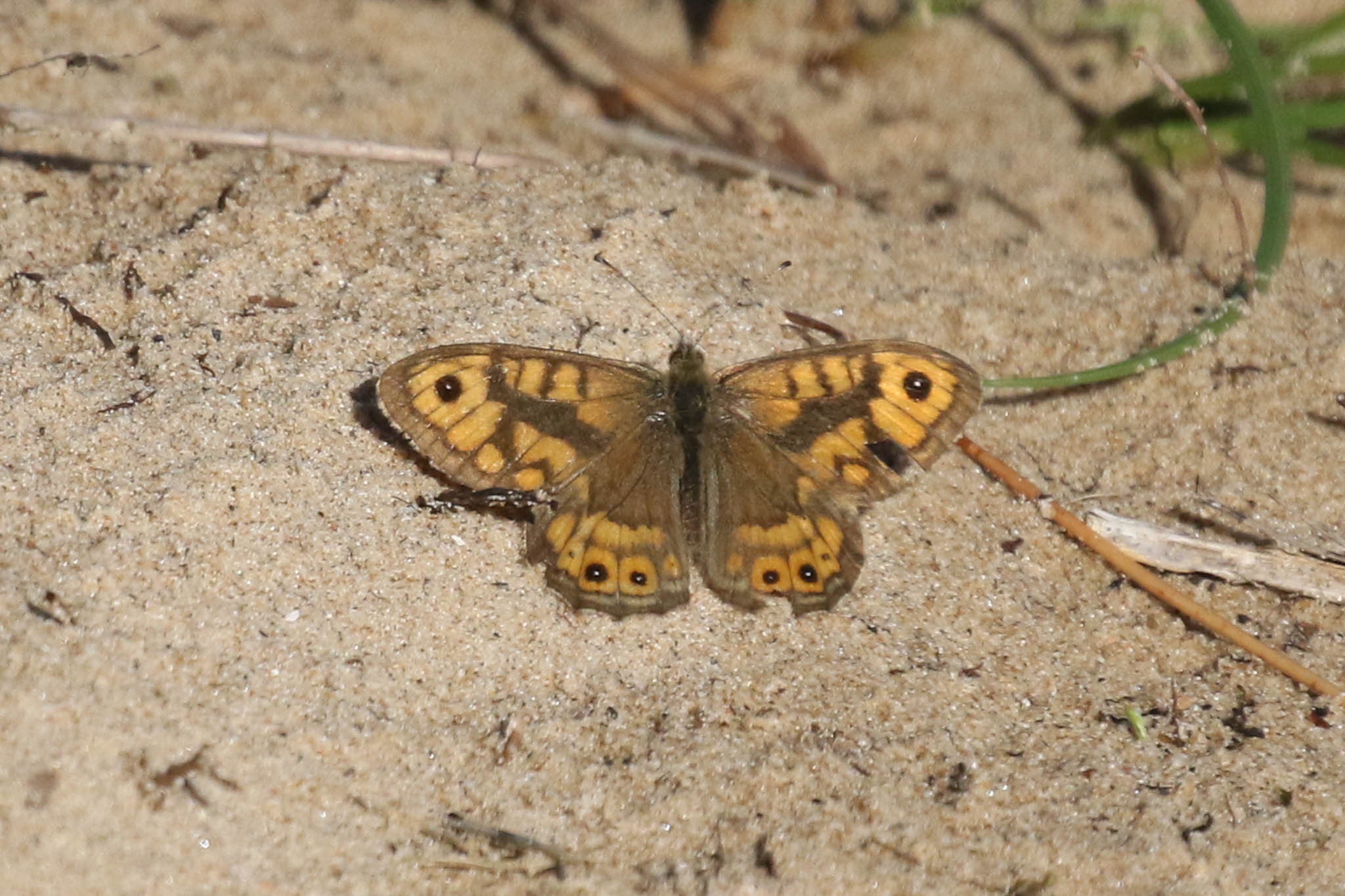
Looking out to the sea, beyond the beach, we could see four Sandwich Terns offshore diving offshore. Small flocks of auks were flying past, and we got a group of Razorbills on the sea in the scope. We could see several Red-throated Divers too, but they were diving constantly. We decided to walk down onto the beach to see if we could get a better look. A Green Woodpecker flew past along the north edge of the pines as we set off and several Skylarks and Meadow Pipits chased round over the dunes.
From out on the sand, we got a couple of Red-throated Divers in the scopes. One or two adults were still moulting out of breeding plumage, and we could see the remains of their red throats in the sunshine, as they turned their heads. Some of the others were already largely in grey and white non-breeding plumage. There were several Great Crested Grebes offshore too.
We had a brief glimpse of another diver, which looked good for Black-throated Diver, but it proved very difficult to see at first as it kept diving. We lost track of it, but after scanning back and forth for a couple of minutes we eventually picked it up again and got a better look. It was a smart adult Black-throated Diver, still largely in breeding plumage, with black throat and chequered white pattern on its back. Eventually, it stopped diving for a while and everyone got a good look at it.
A small flock of Common Scoter flew in and landed on the water further out. There didn’t seem to be a lot moving of visible migration offshore today – we did see a flock of Pink-footed Geese flying in over the water and two Golden Plover flew past.
Further up the beach towards Wells, we could see a large flock of Sanderling roosting on the shore. Nearby, a few Oystercatchers were feeding along with three Bar-tailed Godwits. We got a message to say there were some Snow Buntings on the beach up by the Gap and scanning the beach we could see them flying round very distantly from where we were standing. They were very mobile, continually getting flushed by all the walkers and dogs on the sand.
We decided to walk up the beach to try to get a closer look. The Snow Buntings were some way off to the east at first, but as we got to the Gap, they flew in and landed on the sand much closer to us, eight of them. Then two people walked across the beach towards them, unaware of their presence, and the Snow Buntings were off again. They flew round behind us, then back off east down the beach. We saw them land again, way off in the distance.
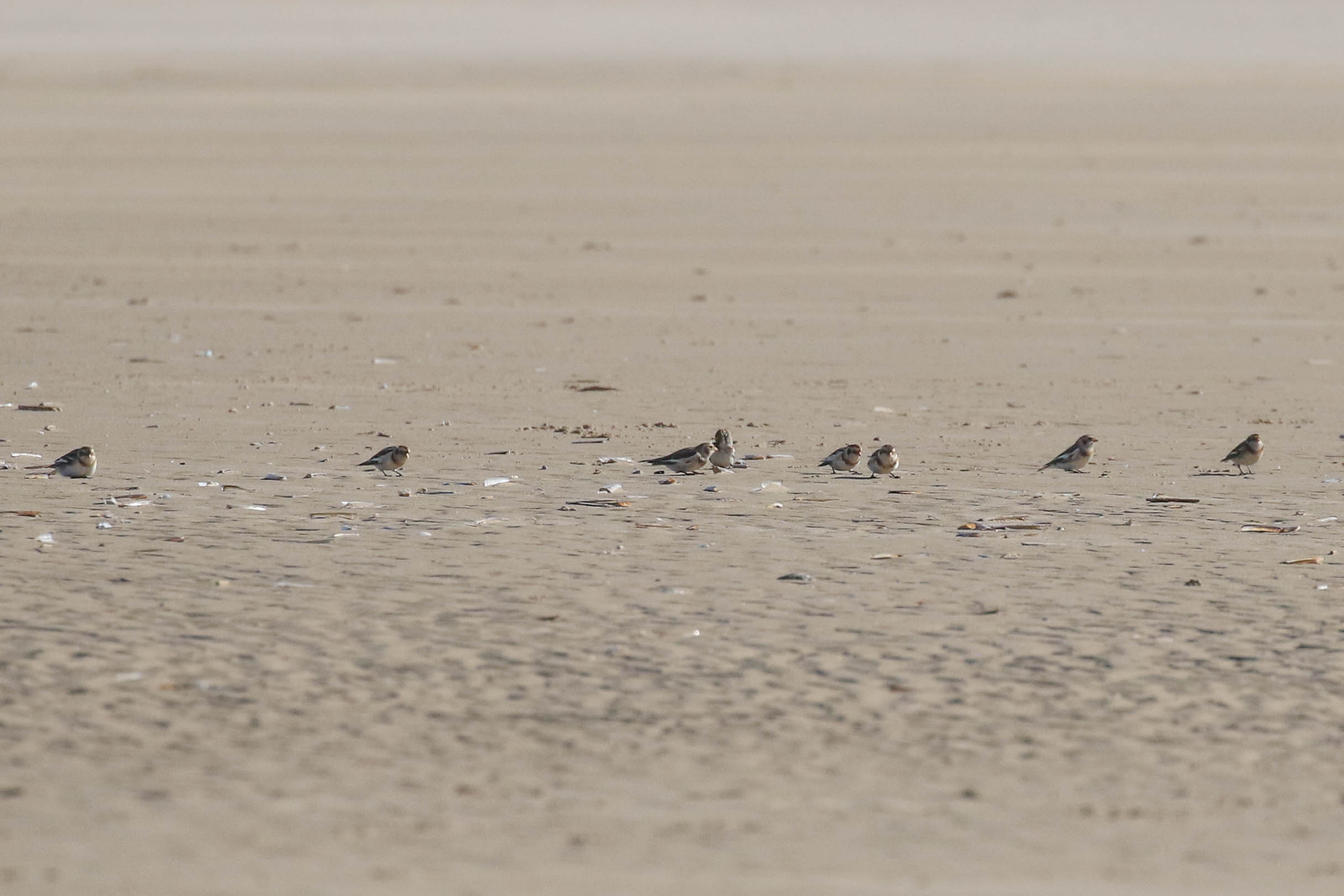
We walked back through the pines at the boardwalk and back along the path the way we had come earlier. It was still very windy on the south side of the pines, and once again we the trees were rather quiet. We stopped for lunch at The Lookout in the sunshine. Another Red Kite drifted high overhead and three Black-tailed Godwits flew past. Afterwards, we drove to the far end of Holkham and stopped to scan the grazing marshes.
We immediately picked up three Great White Egrets with one herd of cows out in the wet grass. We could see their long snake-like necks and yellow dagger bills sticking out of the vegetation. The Belted Galloways on another section of the marsh were all sitting down, so the Cattle Egrets were not with them today. We couldn’t see anything with some much more distant cows over towards Overy dunes either, but then we noticed another herd over towards the pines which were partly hidden behind the trees from us – and looking through their legs we found at least one Cattle Egret with them. Then it flew and landed in the longer grass out of view.
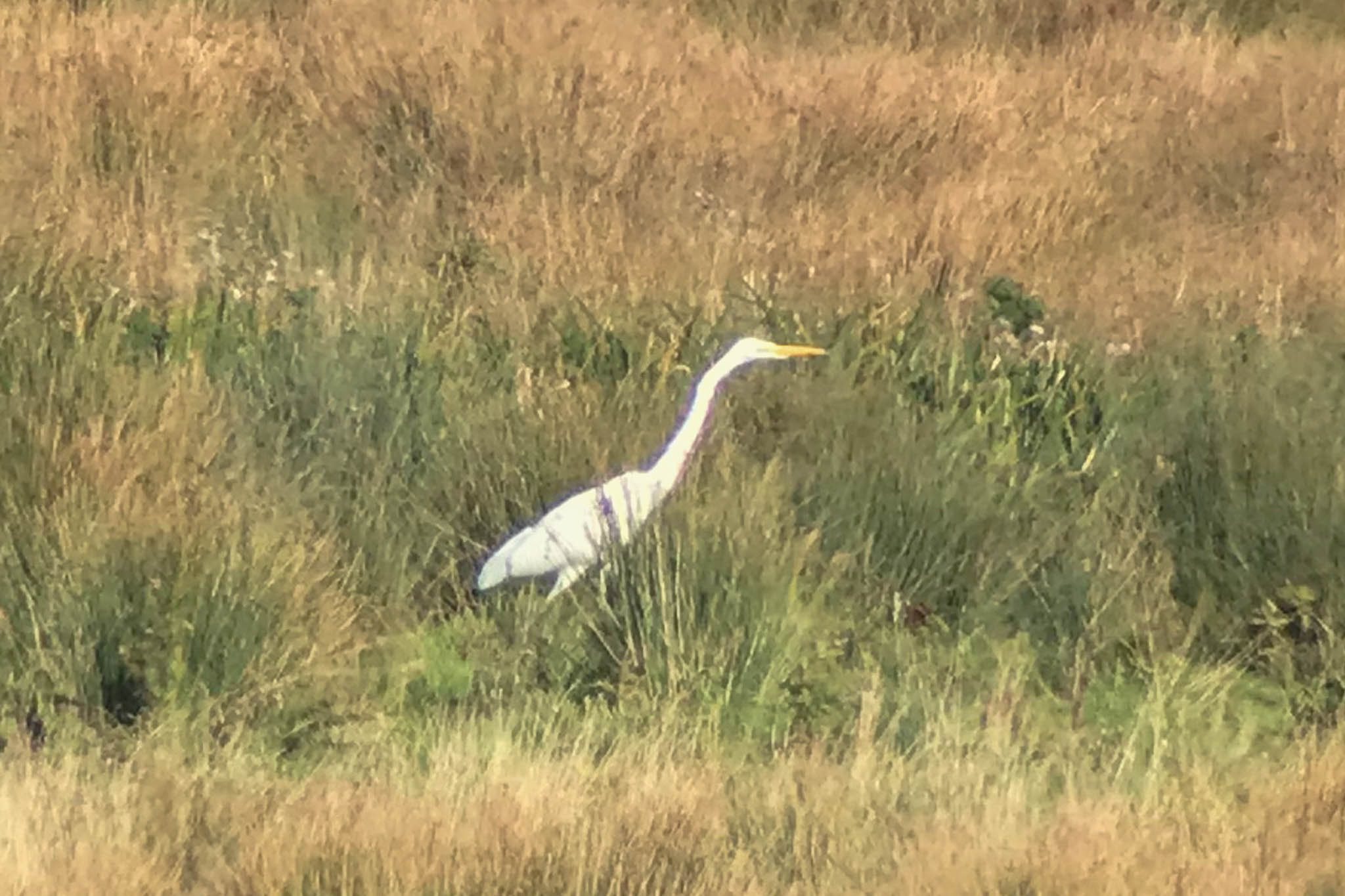
Turning our attention to the scrapes, a smart adult Peregrine was standing on one of the mud banks, with a rather pale Common Buzzard nearby. The nearby Teal and Lapwings seemed rather unconcerned at first, although when the Peregrine did fly round at one point and chase after them, they did scatter. Then the Peregrine landed again and all the other birds settled back down too.
Two more Common Buzzards flew in and out of the trees in front of us and a Marsh Harrier quartered low over the grass out in the middle. A Kestrel flew in and landed on a post in front of us. It seemed to be trying to hunt from the fence, as it flew out and landed down in the grass, before flying back up to another fence post again. After trying this a couple of times, unsuccessfully, it went back to hovering.
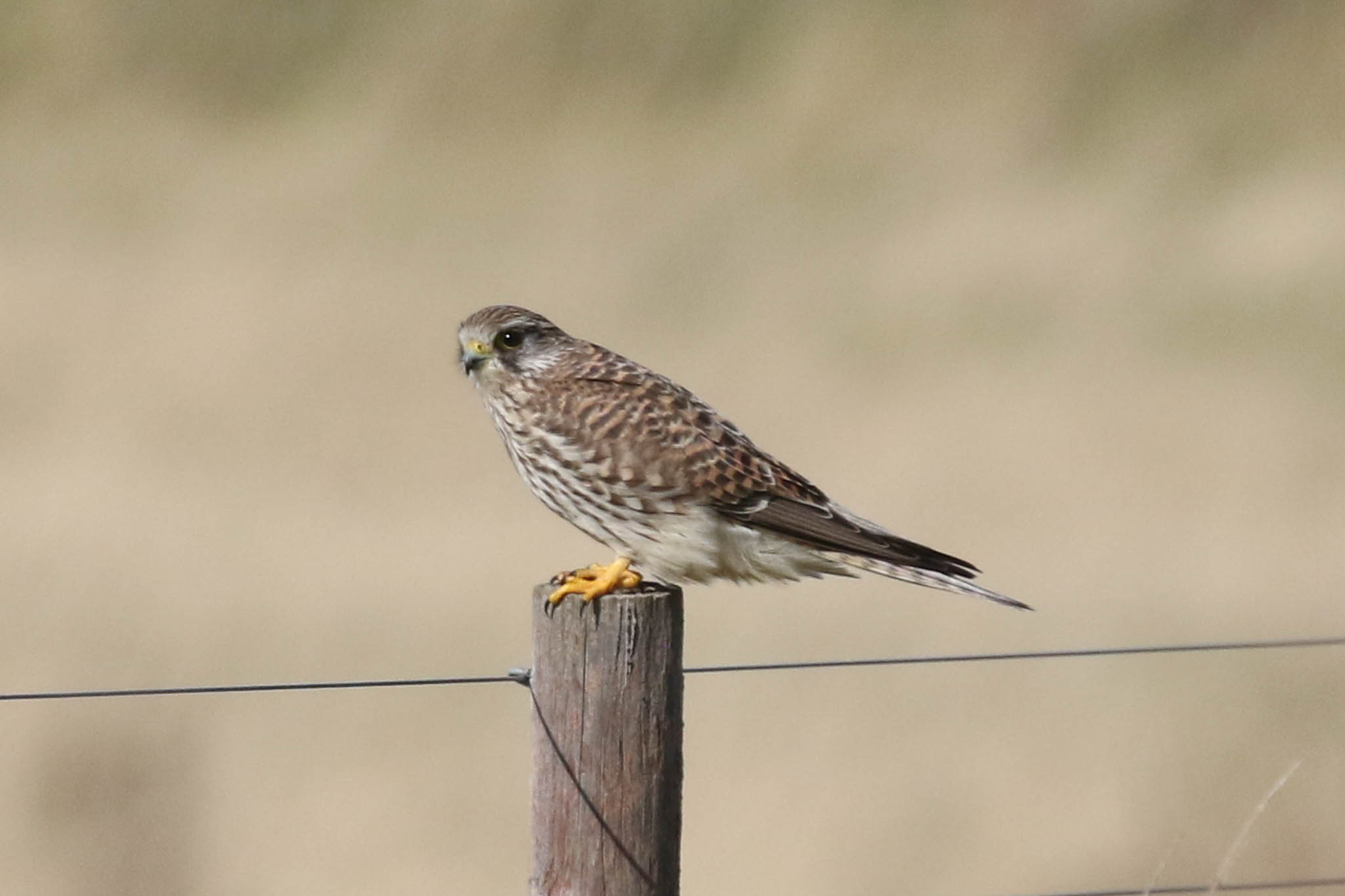
Our destination for the afternoon was Snettisham. It was not a big enough tide today for a full-on Wader Spectacular, but the forecast was still for it to be fairly high. On our way in, we picked out two adult Mediterranean Gulls out on the water on one of the pits with a flock of Black-headed Gulls and Common Gulls. We also saw our first Little Egrets of the day – we had got our egrets the wrong way round today!
It was very windy up on the outer seawall. The wind had picked up further and was now gusting almost up to 40mph (it was forecast to be low 20s!). There were lots of waders already gathered, and more were flying in over the water to join them as we watched. A large flock of Oystercatchers was standing out on the mud further up, towards the sailing club, along with a couple of large groups of Bar-tailed Godwits. The Golden Plovers were more widely scattered out in front of us, at least until they flew off inland to feed, along with lots of Curlews.
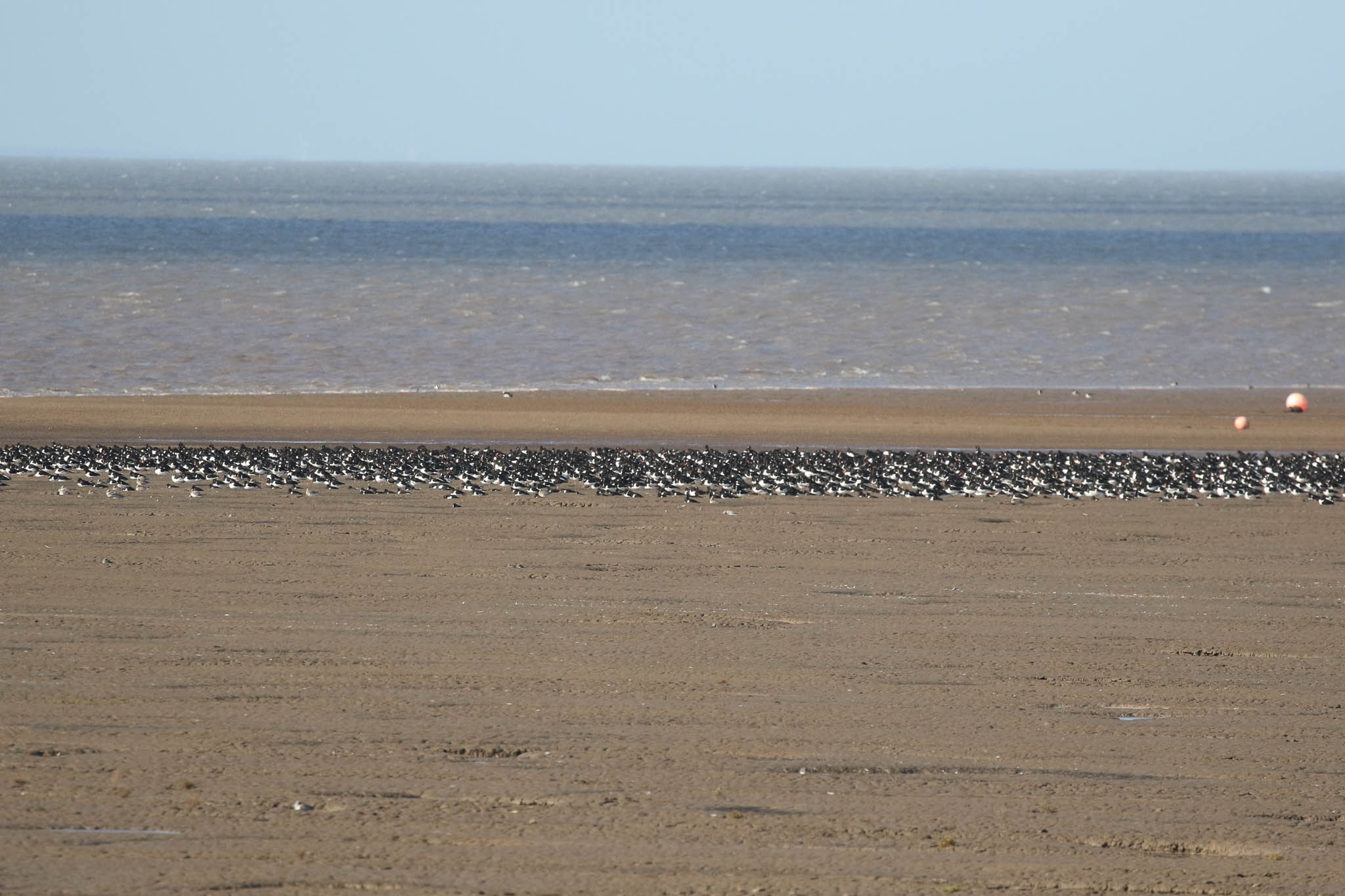
There were more smaller waders closer in, on the mud down in front of us – lots of Ringed Plovers, a few Dunlin, one or two Knot and Grey Plover. We got a nicely-marked juvenile Bar-tailed Godwit in the scope. Scanning further up, we picked up a Curlew Sandpiper, but it disappeared into the small muddy channels and we lost sight of it. We braved the wind and walked up in front of the chalets to see if we could get a closer look.
We ended up finding at least five Curlew Sandpipers on the mud here, though they were hard to keep track of. All juveniles, we eventually all had nice views of them – scalier above and cleaner below than the Dunlin, with a variable pale peachy-orange wash across their breasts.
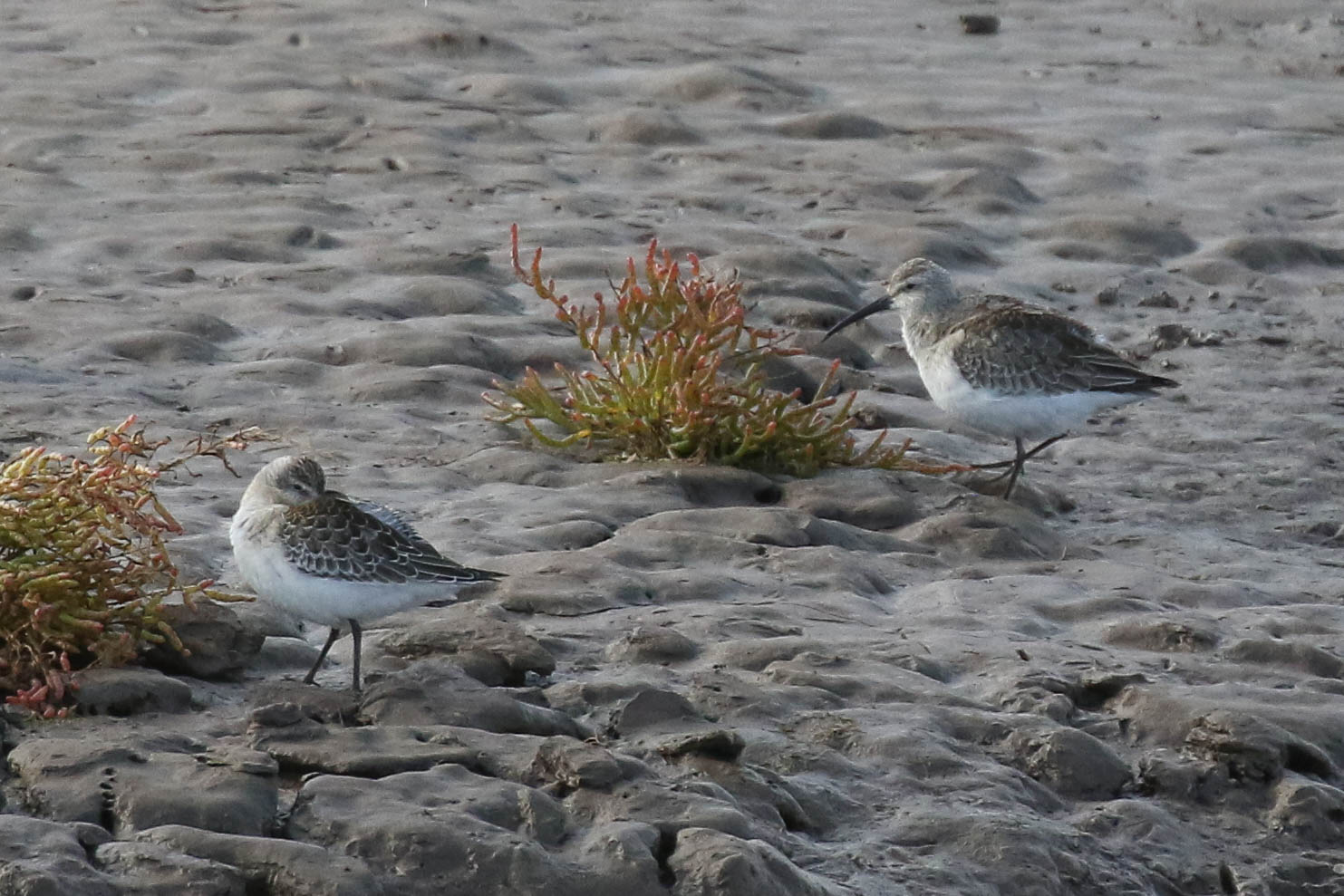
We had better views of some of the other small waders from here too, even if we had to be careful the scopes didn’t blow over in the wind now. There were a few Turnstones too and a Black-tailed Godwit still largely in rusty-orange breeding. The tide was coming in but very slowly, held back by the wind. We decided to walk down to the far end and see what was on the main Pit.
We had a quick look down the last pit from the causeway, and could see several Spoonbills and Spotted Redshanks from here. Another Spotted Redshank flew in past us calling. We walked on, down to Shore Hide for a closer look.
We counted nine Spotted Redshanks from the hide, mostly asleep amongst the rocks out in the middle of the water. They were noticeably paler than the flock of Common Redshanks roosting on one of the gravel islands nearby and occasionally one of the Spotted Redshanks would wake up and flash its longer needle-fine bill.
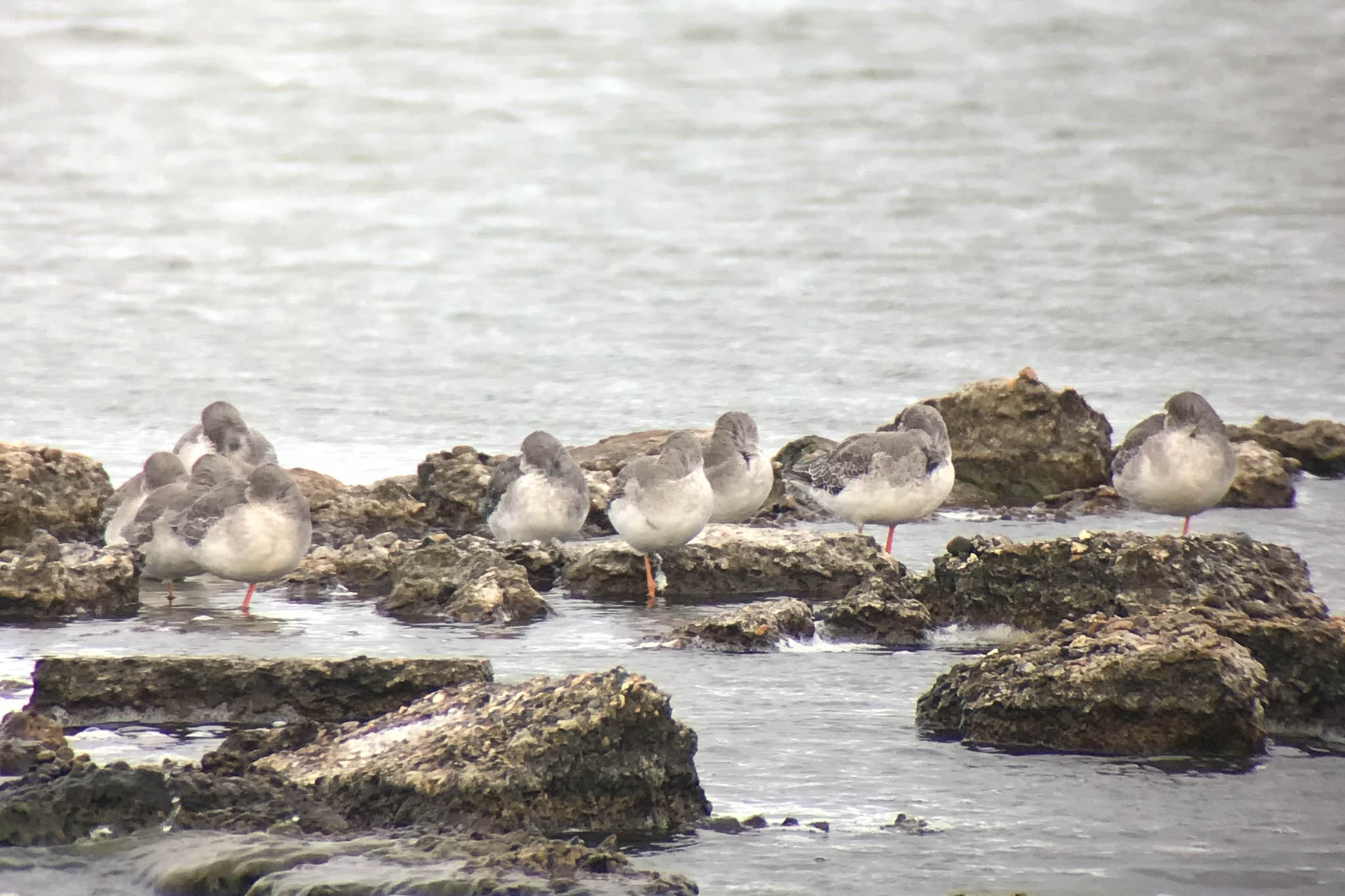
Their were ten Spoonbills on here this afternoon. Nine were roosting in with the Cormorants on the rocks, and unusually they were mostly awake, busy preening. A tenth Spoonbill was further up towards Knots Landing all on its own. For no apparent reason, the Spoonbills then started flying up, over the hide and out towards the Wash. Four left first, followed by another four, until one of the nine was left along with the loner further down.
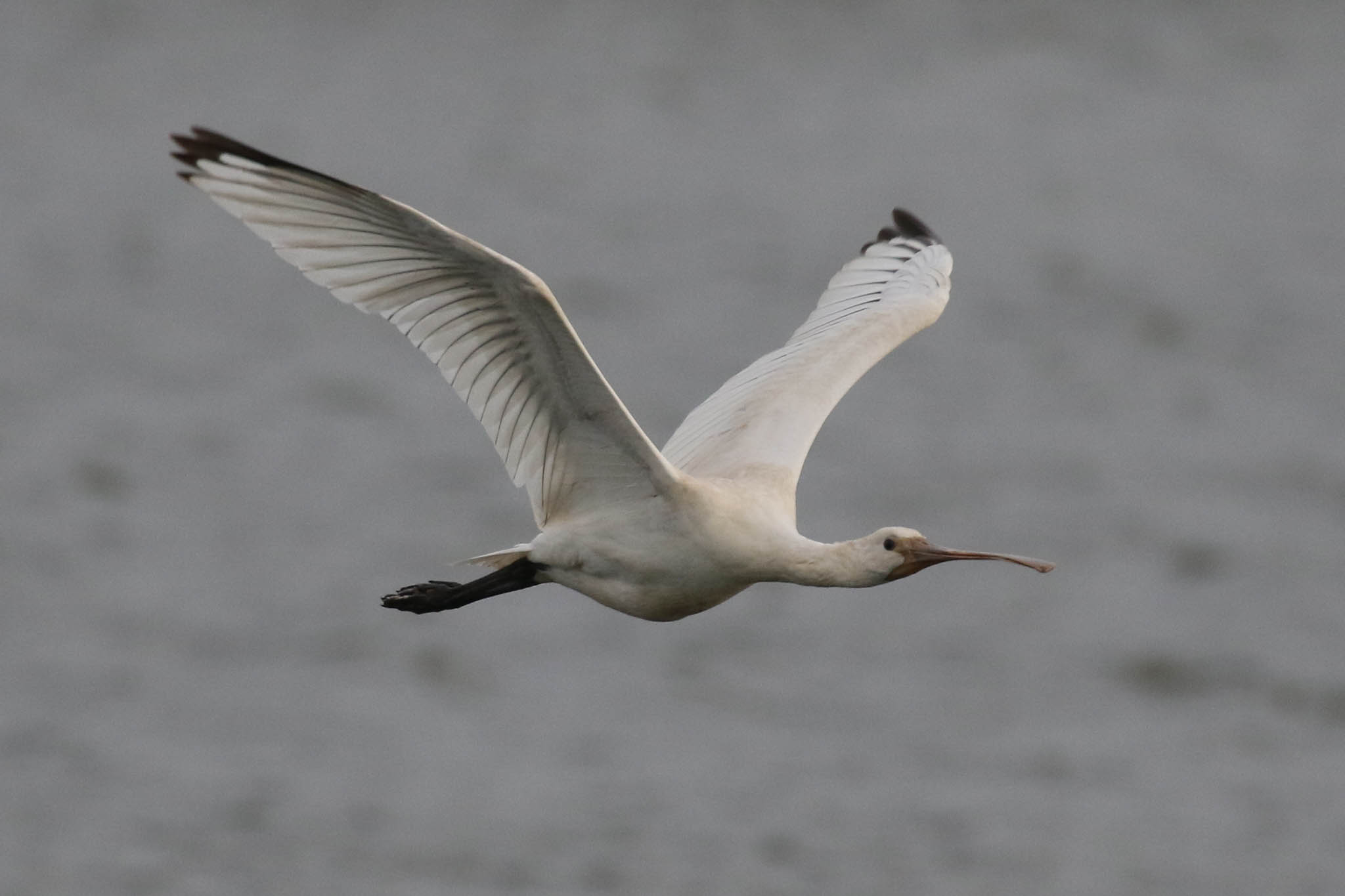
There were a few ducks on the Pit, notably a few Wigeon and a couple of Shoveler, both new for the day. A couple of Coot were also additions to our list. A Marsh Harrier with green wing tags flew across over the back of the Pit. From photos, we could see the tags bore the code ‘9I’ and overnight we got confirmation straight away from the ringing scheme co-ordinator – a female, it had been tagged as a nestling down in the Broads in June 2018, and only seen three times since, the last not far away from here but back in 2020. Nice for us to be able to provide an update.
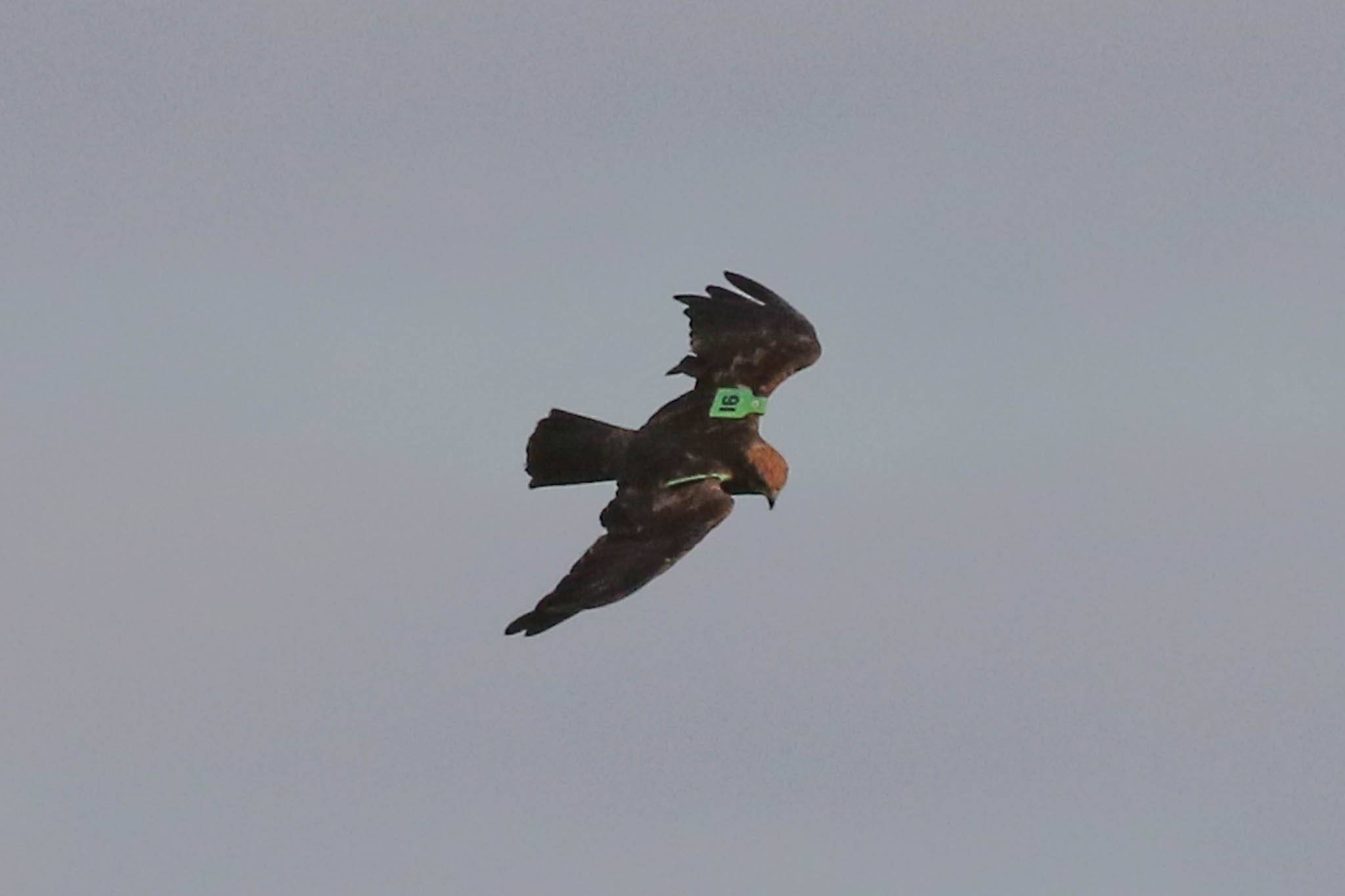
Then it was time to start making our way back. The tide had come in more while we were in the hide, but was still not as high as it was predicted to be due to the strong wind. A single Avocet was now roosting out on the mud in front of Rotary Hide. A flock of Pink-footed Geese flew in over the Wash calling and landed out on the mud, presumably early birds returning to roost.
It had been a successful first day, despite the wind – and we had more to look forward to tomorrow.
